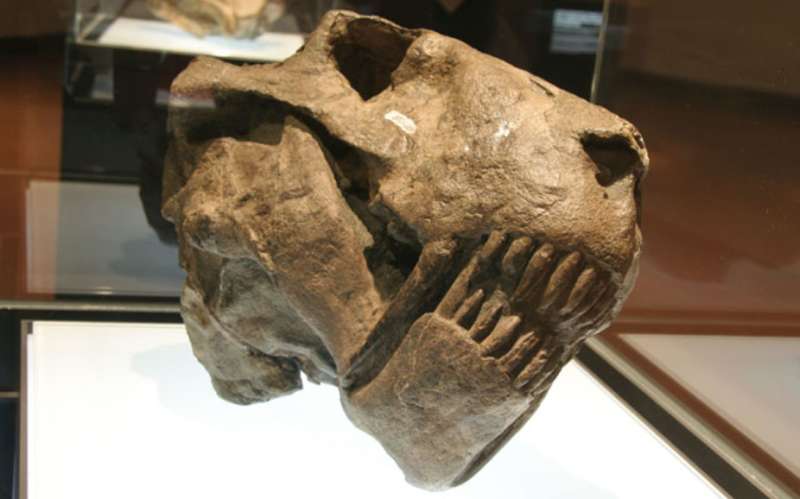You can thank our pre-mammalian ancestors for your sexy teeth

Next time you're getting ready for a hot date and pause to flash a toothy grin at yourself in the mirror, thank your ancestors.
Mammals have a dentition divided into three distinct types of teeth.
There are large, sharp canines and next to them incisors. Behind them, in our cheeks, are teeth known as post-canine dentition. This separation has been traced back more than 300 million years when our ancestors still looked like huge reptiles.
These were the pre-mammalian therapsids. They had long, sometimes sabre-like canines. Scientists long thought that these sharp teeth were deadly hunting devices. But there was a problem: even herbivorous species of therapsid had sabre-like canines. Their chompers clearly weren't for hunting prey. Some speculated that the canines in question might be for defence from predators.
Or were they actually used for sexual display?
Today, sabre-tooth mammals such as the walrus or the deer-like muntiac, have their canines constantly on display. This allows them to seduce mates or intimidate their kin. That's the modern situation. My colleagues and I wanted to know whether sexual selection was also an important phenomenon among our pre-mammalian ancestors.
The answer, uncovered by cutting edge technology and careful study, is "yes".
Putting therapsids under the microscope
Our research involved a team of palaeontologists from the University of the Witwatersrand's Evolutionary Studies Unit; a group from the university's School of Anatomical Sciences and scientists from the European Synchrotron Radiation Facility in Grenoble, France.
Our subject was a mysterious fossil therapsid, Choerosaurus dejageri. It is part of the Eutheriodontia family. Little is known about this mammal-like reptile that lived 259 million years ago and belonged to the lineage that gave birth to mammals. Choerosaurus is unique, as it's the only Eutheriodont to have two symmetrical bosses: horn-like structures on its upper and lower jaws, the maxilla and mandible.
We wanted to figure out what these cranial bosses were for: combat or sexual display.
Only one Choerosaurus fossil has been found, on a farm near Beaufort West in South Africa: a delicate skull. We used X-ray computerised micro-tomographic, or microCT, on this fossil. We compared the scans with those from another therapsid, the monstruous dinocephalian Moschops. The Moschops is known to have head butted its enemies, so its skull and cranial bosses were obviously developed for high energy combat.
But the Choereosaurus' skull and cranial bosses were found to be too weak for such combat. In addition, the Choereosaurus' maxillary boss was packed full of nerves and veins. This isn't ideal for fighting, since any combat would cause a lot of pain and bleeding.
The maxillary boss is far more suited to supporting a colourful, sensitive cornified pad – a keratinous covering, like a horn. This suggests a bias towards display behaviour, and away from combat.
Sexual selection
This is the first evidence of structures dedicated solely to competition between males for mates and territory. These structures would have been used either for low energy fighting and/or sexual display in Eutheriodontia. Since this group was the direct ancestors of modern mammals, revealing their toothy secrets gives us a better understanding of our own mouths and those of other mammals.
The Choereosaurus fossil shows that sexual competition and the associated complex, ritualised behaviour like sexual display and ceremonies of intimidation were an important component of therapsid evolution. This finding suggests that sexual selection may have played a more important role in the origin of mammals than originally thought.
It's a vital step to reshaping our understanding of humans' deep evolutionary roots – right down to our canine teeth.
More information: Julien Benoit et al. Cranial Bosses of Choerosaurus dejageri (Therapsida, Therocephalia): Earliest Evidence of Cranial Display Structures in Eutheriodonts, PLOS ONE (2016). DOI: 10.1371/journal.pone.0161457
Journal information: PLoS ONE
This article was originally published on The Conversation. Read the original article.![]()




















